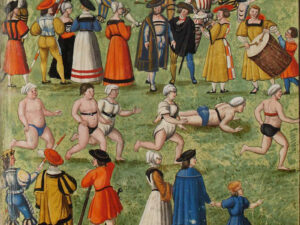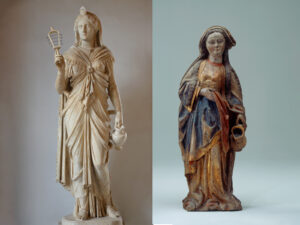
Swiss National Museum / Marco Heer
2020
Once every century, the first two and last two digits of the year are a matching pair. That might look nice, but it doesn’t make the year any more harmonious, as a look back shows.
About 380 years before Columbus, in the year 1010, Icelandic seafarer and trader Thorfinn Karlsefni ventured across the Atlantic and established the settlement of Hóp, which survived for three years, in Vinland on the Gulf of Saint Lawrence. Thorfinn’s son Snorri Thorfinnsson (Þorfinnsson) was born at the settlement, making him the first child of European descent to be born in America.
In 1111, Freiherr Rudolf took over the lordship (Herrschaft) of Belp from his father, Ulrich. The family was part of the retinue of the dukes of Zähringen, but very soon found itself in competition with the increasingly powerful city-state of Bern. At the Battle of Dornbühl (Oberwangen) in 1298, Belp fought on the side of the city of Freiburg im Üechtland (Canton of Fribourg), and lost. As a result, the Herrschaft of Belp passed to Bern.
Lake Biel hasn’t always been called Lake Biel (Bielersee). There are various different names in the records, including lacus de Nuerol, Nugerolsee (1221) and Bielsee (1287). The name lacus Erliacensis (Erlachersee, or Lake Erlach), dating from 1212, is also interesting. However, none of these names survived. Until the 19th century, the body of water was also called Nidauersee (Lake Nidauer). It was only as the city of Biel grew that the name of the lake changed definitively.
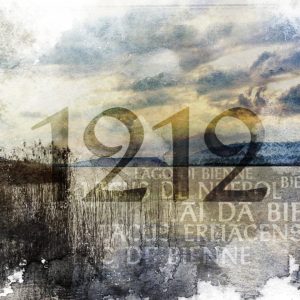
Lake Biel hasn’t always been called Lake Biel (Bielersee).
Swiss National Museum / Marco Heer
In 1313 Jakob von Reinach became prior of the monastery at Beromünster. He thus became the head of a wealthy institution which was also influential in teaching. As a prior, he was considered one of the finest minds of his time. During von Reinach’s term of office the monastery flourished, as evidenced by the numerous writings that have survived.
In Urnäsch, they realised early on: before you can harvest, first you must sow. They did that in 1414, building the Antoniuskirche (Church of St Anthony). As a result of this construction, the people of Urnäsch became ecclesiastically and politically independent in 1417. But some very solid arguments during the Appenzell Wars (1401-1429) also contributed to that outcome.
In 1515 the Onion War ended. It had begun two years earlier. No longer content with the mercenary policy of a handful of profiteering recruiters, the angry rural population had marched on the cities of Lucerne, Bern, Solothurn and Zurich. Negotiations ended the uprising. But in 1515 it flared up again. In January of that year, 50 insurgents were captured and their leader, Hans Heid, was executed. And why a war over onions? In the siege of Lucerne in 1513, the gardens located outside the city walls were devastated.
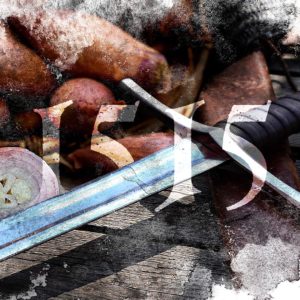
In the Onion War, the rural population rebelled against the cities. The conflict ended in 1515.
Swiss National Museum / Marco Heer
Too many numbers? Don’t worry – only another five centuries to get through!
In 1616, Lucerne banned the performance of the Osterspiel (Easter play). The Jesuits had found fault with the medieval citizen’s play, only to later use it for their own, exclusively ecclesiastical purposes. In the reformed (Protestant) areas, theatre performance was generally considered to be immoral. For that reason, in 1617 Geneva issued a total ban, followed by Zurich in 1623. It was only 100 years later that this ban was relaxed.
Wilchingen is a small village in the Klettgau region of Schaffhausen. The village had become rich from wine. Schaffhausen wanted to channel off some of this wealth, and licensed an additional tavern. The municipal authorities were thereby encroaching upon the Tavernenrecht (tavern right) of the village community. The inhabitants of Wilchingen weren’t prepared to tolerate that. In 1717 there was an uprising. The conflict dragged on for years, and increasingly became a dispute between town and country. In the end, in 1729 Wilchingen had to back down.
In 1818, Neuchâtel watchmaker Edouard Bovet moved from London to China. He was to do business there for the company Magniac, his employer. The work went better than expected, and so he and his two brothers decided to manufacture their own watches and sell them there as well. The company grew steadily, and when Bovet died in 1849 his watches were among the best in the world.
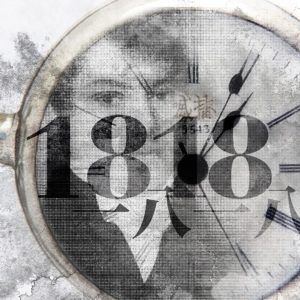
Edouard Bovet moved to China in 1818 to sell watches. It was the beginning of Bovet watches, which soon ranked among the best chronometers in the world.
Swiss National Museum / Marco Heer
Under the leadership of Elisabeth Flühmann, in 1919 the Aargau association for women’s education and the issue of women’s rights (Aargauische Verband für Frauenbildung und Frauenfragen) collected more than 7000 signatures in support of women’s suffrage. The petition was presented in the Great Council (Grosses Rat) of the Canton of Aargau. The request failed, but Flühmann’s commitment to higher education for women and girls continued to have an effect for a long time afterwards. And not just in Aargau.
On 1 January 2020 a raft of new laws and regulations will come into force. One of these is the new Water Resources Act (Wasserrechtsgesetz). The old one dates from 1916. Tax reforms will also take effect, and may result in Switzerland finally being removed from the EU’s ‘grey list’ of tax havens. Whatever happens after that, you’ll probably be able to read about it in the history books in a few years’ time…
We wish you a great start to the New Year.

